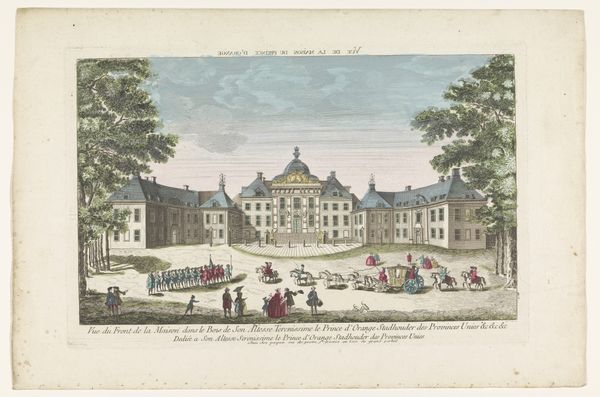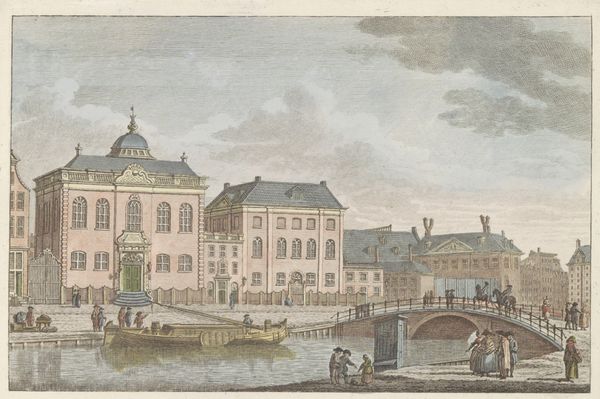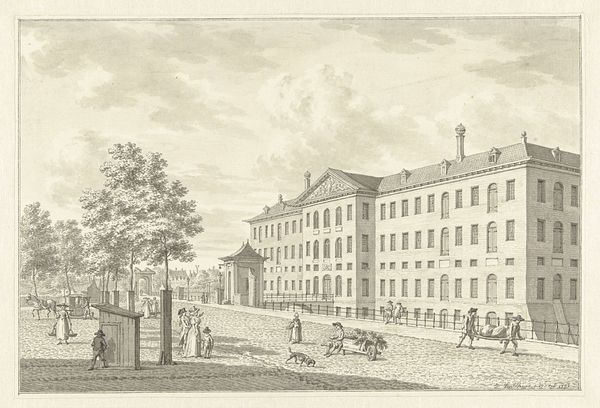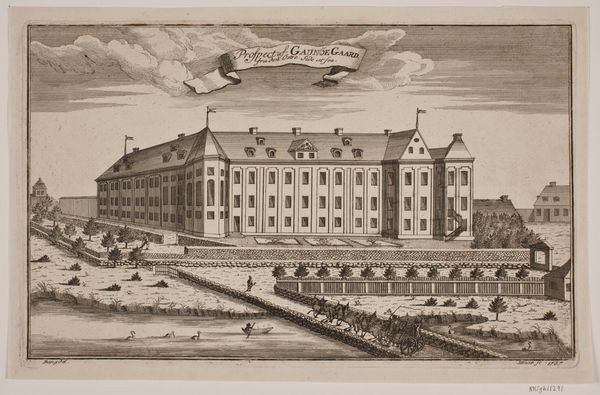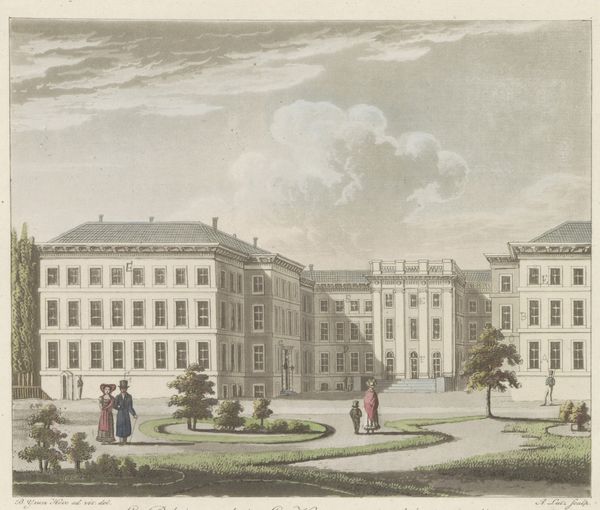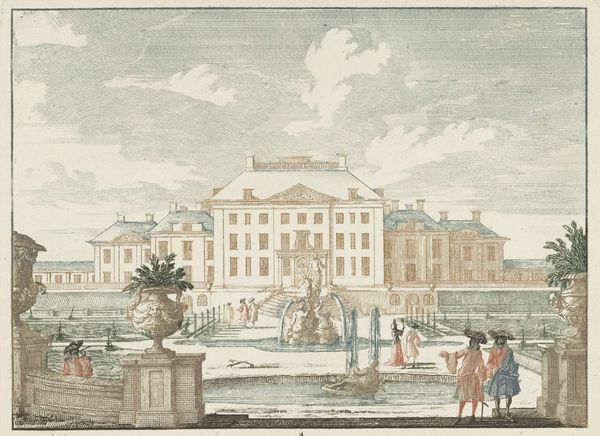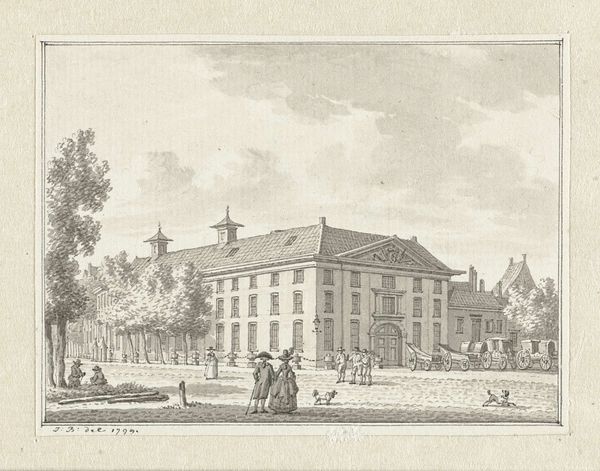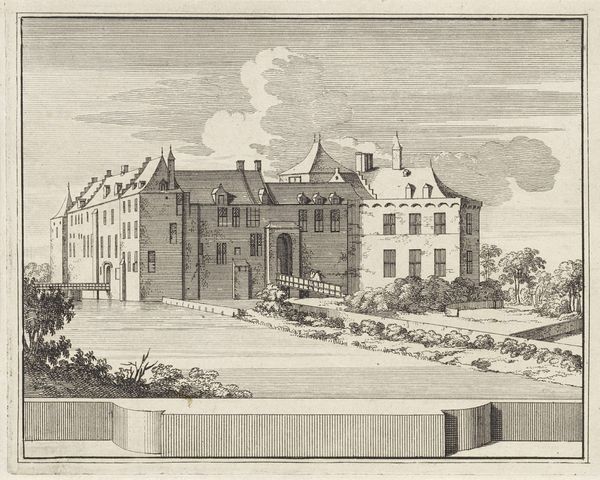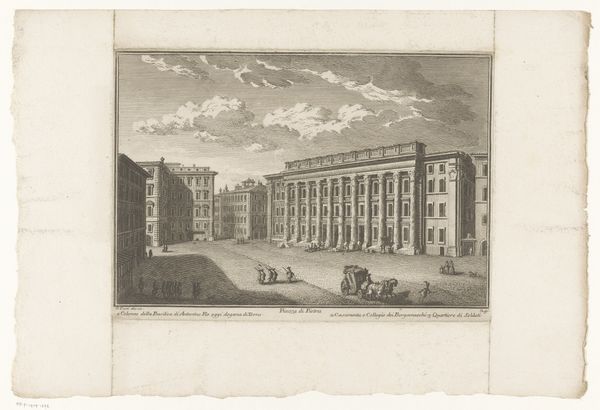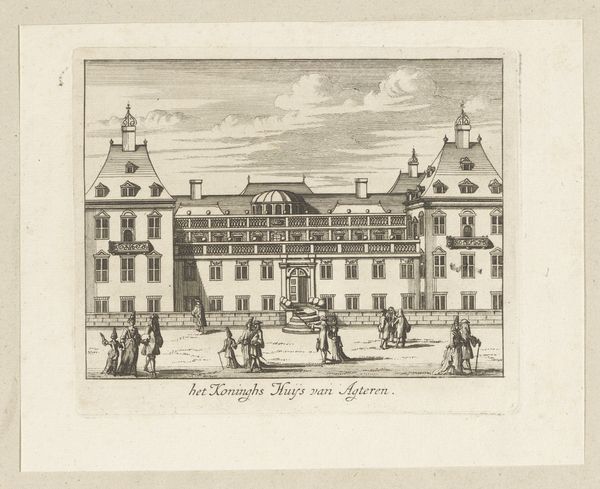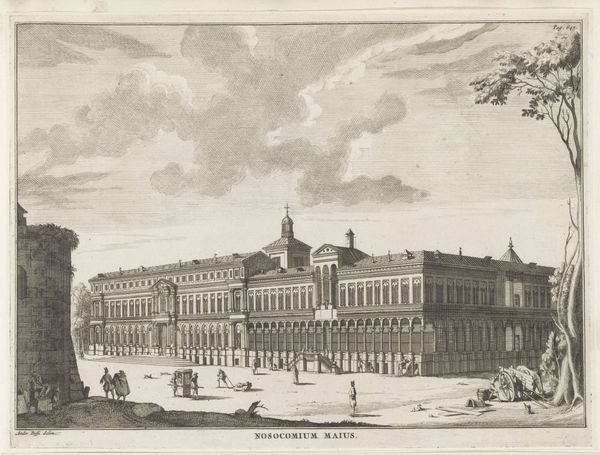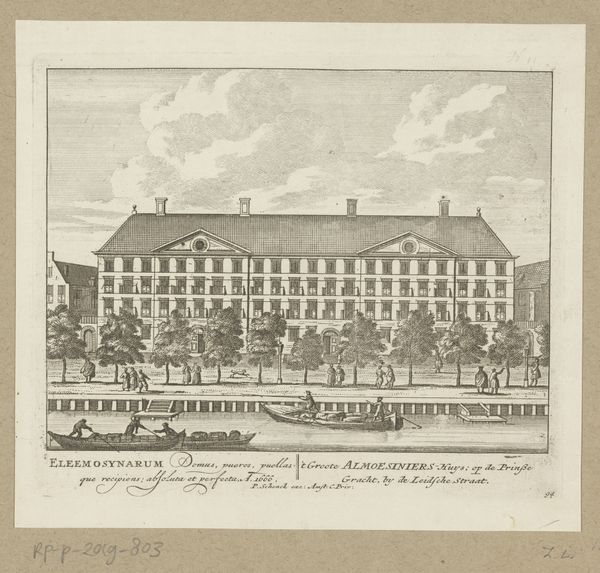
Lutherse Diaconiehuis te Amsterdam, ca. 1790 Possibly 1786 - 1825
0:00
0:00
carelfrederikibendorp
Rijksmuseum
Dimensions: height 175 mm, width 250 mm
Copyright: Rijks Museum: Open Domain
Curator: What a scene! It evokes a serene almost wistful feeling, doesn't it? Editor: Definitely! I’m immediately struck by the detailed craftsmanship. We are looking at "Lutherse Diaconiehuis te Amsterdam," a print, likely an etching or engraving by Carel Frederik Bendorp, created around 1790. Notice the precise lines, the carefully rendered architectural details of the building and bridge...it speaks to the skill and labor involved in its creation. Curator: Skill, yes, but also sensitivity. The subtle coloring and the arrangement of the figures… they're not just placed there; they're like musical notes in a quiet composition. I find the open sky calming. Editor: And let's consider the material reality – ink, paper, metal plates, the press… These aren’t just passive ingredients, they define the very texture of the image. I wonder how many impressions were made and who would have consumed these images? Were they commissioned, mass-produced for sale, or souvenirs for tourists visiting the Diaconiehuis? Curator: Hmm, questions worth exploring. The building itself dominates. Yet it doesn't feel imposing, but rather humane, approachable, maybe even hinting at the social support offered within its walls, what with the Lutherse Diaconiehuis being a type of care or almshouse. It sparks curiosity, at least for me! Editor: True. And if you zoom in, you'll see the social fabric meticulously stitched in – carriages suggesting wealth and trade, laborers reminding us of the city’s dependence on physical labor. Bendorp presents a structured view of the economy. Curator: Structured indeed! I still marvel at how the composition feels spacious yet intimate at the same time. It allows us to daydream our way into 18th-century Amsterdam, you know? Editor: I suppose it is fascinating how printmaking democratized image consumption during this period. So what remains are ghostly apparitions of the means by which things once operated. Curator: An excellent point—and such a paradox. Art offers this magical entry point into other eras while always holding up a mirror to our own… Well, thanks for adding these layers! Editor: My pleasure. Thinking about art as part of the machinery of the time – there is an allure in that for sure.
Comments
No comments
Be the first to comment and join the conversation on the ultimate creative platform.
